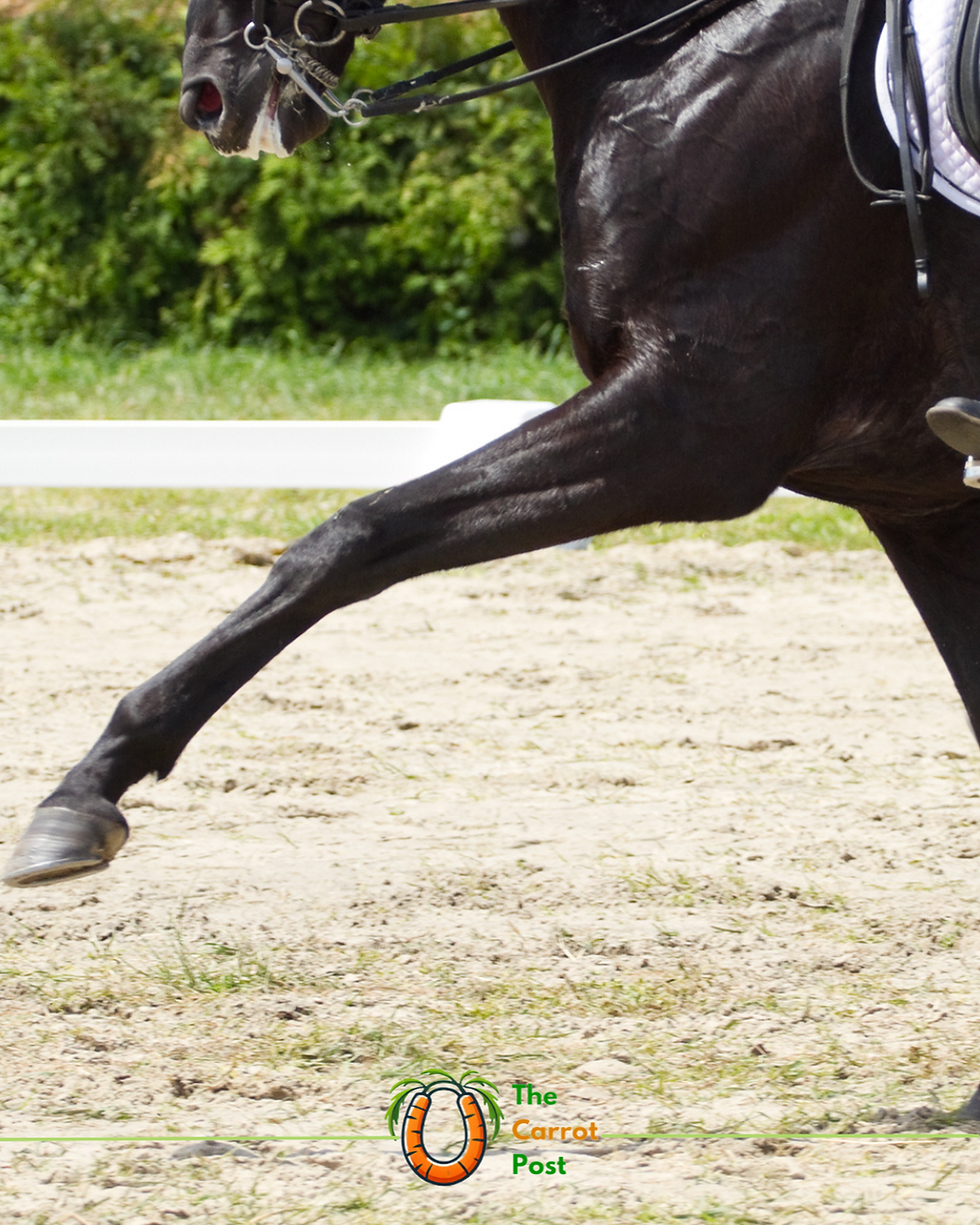🥕 “Bits Work Because They Hurt”: A Whinny of Discontent from the Dressage Arena
- Tilly Stirrup - TCP

- Apr 23
- 3 min read
In a recent presentation to the GEF, leading equitation scientists cut through the niceties and delivered what might be the bluntest line heard in a federation boardroom since someone accidentally served non-organic carrots at the Riders’ Welfare Lunch:
“Bits work because they hurt.”
Mic. Drop.
Naturally, this didn’t go down well with the more... tradition-forward members of the GEF, who briefly considered banning science altogether before realizing it might look bad on Instagram. You know it’s a good week in dressage when equitation scientists drop a mic with the subtlety of a dropped anvil. The line that’s sent the equestrian world into a tailspin—“Bits work because they hurt”—wasn’t whispered in a stable aisle. Oh no. It was lobbed into the sacred halls of the GEF, where the whiff of a double bridle is stronger than the scent of accountability.
And just like that, the debate around bits has galloped straight past nuanced discussion and plunged headlong into the realm of scandal, emotion, and internet comment threads more volatile than a horse on spring grass. GEF President Alejandro “Alex” Ferreira, ever the diplomat with a doctorate in sidestepping difficult truths, offered this statement in response:
“We at the GEF are deeply committed to advancing equine welfare in a way that does not compromise the rich heritage of our sport—or the financial stability of our championship partners. Bits are a longstanding part of equestrian culture, and while we welcome ongoing research, we must balance progress with tradition, and science with the ‘unique feel’ of a well-timed half-halt.”
Translation: if it hurts but makes the horse rounder, and sponsors like it, it stays.
Enter the battleground of science vs. tradition. On one side, we have ethologists, veterinarians, and welfare experts waving peer-reviewed papers and photos of bruised tongues. On the other side? Riders clutching their double bridles and muttering something about “feel” and “elegance.” Helga, who trains with the quiet authority of a woman who once schooled a horse through piaffe while negotiating a mortgage, is unimpressed by what she calls the “Pop Science Panic.”
“If bits were truly designed to harm, we’d all be banned by now. Oh wait—unless that’s next week’s GEF directive?”
Enter Dr. Leila Al-Farsi, CEO of the World Equestrian Welfare Organisation and everyone’s favourite thorn in the GEF’s side.
“Look, we don’t need to throw all our bridles in a bonfire,” Leila clarifies, “but let’s not pretend this is new information. Science has been quietly muttering about bit pressure for years. Now it’s finally yelling, and everyone’s pretending to be shocked. If your training method requires pain, it’s time to change the method, not deny the pain.”
Despite the growing pressure from welfare advocates, the competition world remains locked in a bit of an identity crisis (pun fully intended). As some riders experiment with softer options, others are doubling down—literally—on elaborate bit-and-noseband combinations that look more suited to medieval jousting than modern sport.
So where do we go from here? Now, before you start smudging sage around your tack locker and crying “cancel culture” on behalf of the pelham, let’s be clear: this isn’t a pitch for universal bitless riding. It’s a call for honesty. If your training relies on pain, the science says it’s time to admit that—and either adjust your methods or your morals.
Some are calling for open trials comparing bitted and bitless performance at top levels (now that’s a live stream we’d watch). Others are pushing for greater rider education on rein tension, contact, and how not to accidentally reef your horse’s face off mid-half pass.
But the loudest voices right now? The horses themselves—who can’t speak, but can resist, evade, rear, bolt, or quietly endure. And maybe it’s time we started listening more closely to the ones who’ve had to suffer our silence. In a sport increasingly under the microscope of public scrutiny, the real question is: Can equestrianism evolve without losing its essence? Can we embrace modern welfare standards and still prance around in top hats pretending our horses aren’t just tolerating us?
Maybe the future isn’t no bits, or all bits—but the right bits, used with the right education and the right intent. Or maybe, just maybe, we stop clinging to outdated tools like toddlers with comfort blankets and start listening to the science (and our horses).
Until then, we leave you with this thought: if you need three nosebands, two bits, and a flash strap to “communicate” with your horse… is it still a conversation? Or are we just yelling in metal?







Comments